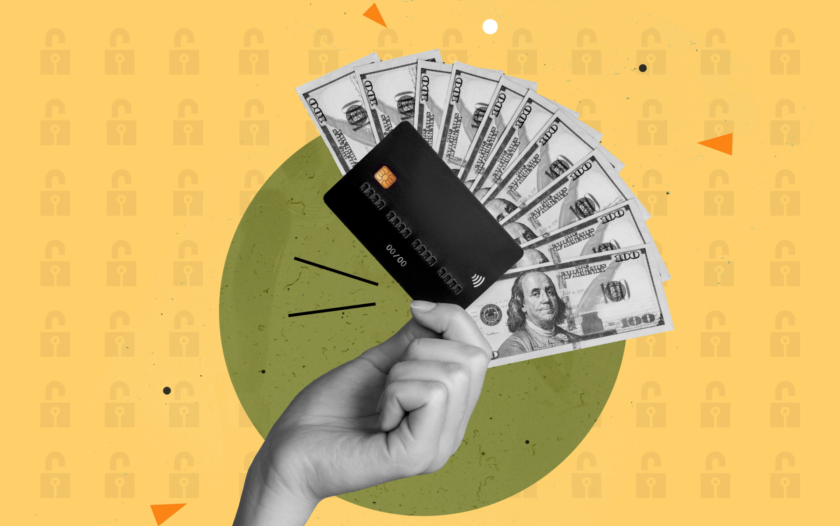Secured Credit Card: Everything You Should Know
About Harrison
Harrison Pierce is a writer and a digital nomad, specializing in personal finance with a focus on credit cards. He is a graduate of the University of North Carolina at Chapel Hill with a major in sociology and is currently traveling the world.
Read full bio
At a Glance
Secured credit cards can be an excellent tool for individuals looking to build or rebuild their credit. They offer a way to establish a positive credit history, even if you have limited or damaged credit. Let’s explore secured credit cards, how they work, their advantages and disadvantages, and provide tips on choosing the right secured credit card for your needs.
In this article, you’ll learn:
$200
The minimum deposit for most secured credit cards on the market.


What is a secured credit card, and how does it work?
A secured credit card is a type of credit card that requires a security deposit, which serves as collateral against the credit limit. The deposit acts as a form of assurance for the credit card issuer, reducing the risk of lending to individuals with poor or no credit. The credit limit on a secured credit card is typically equal to or slightly higher than the security deposit. Using the secured credit card responsibly and making timely payments can demonstrate your creditworthiness and improve your credit score over time.
Secured credit card vs. unsecured credit card
The main difference between them is the requirement of a security deposit. Unsecured credit cards do not require a deposit and are typically offered to individuals with a good credit history. Secured credit cards, on the other hand, are more accessible to those with limited or damaged credit. They provide an opportunity to build credit or improve credit scores, while unsecured credit cards are more suited for individuals with established credit.
Learn more: Secured vs. Unsecured Credit Card
How to choose a secured credit card?
When selecting a secured credit card, it’s important to consider certain factors. These include the security deposit amount required, the credit limit, any annual fees or additional charges, the card issuer’s reputation, and the possibility of transitioning to an unsecured card. Comparing different options and reading reviews can help you make an informed decision and choose a secured credit card that aligns with your financial goals.
Pros and cons of secured credit card
Secured credit cards offer several advantages, such as building or rebuilding credit, potential credit limit increases over time, and increased financial discipline. However, they also have some drawbacks to consider. These include the requirement of a security deposit, potential annual fees, and limited benefits compared to unsecured credit cards. You should weigh the pros and cons based on your circumstances before applying for a secured credit card.
Is getting a secured credit card a good idea?
Getting a secured credit card can be beneficial for individuals looking to establish or improve their credit. If you have a limited credit history, a secured credit card can allow you to build credit and demonstrate responsible financial behavior. However, it’s crucial to use the card responsibly, make timely payments, and avoid accumulating excessive debt. With consistent and responsible use, a secured credit card can pave the way toward obtaining better credit opportunities in the future.
How to build credit with a secured credit card?
You should follow a few key strategies to effectively build credit with a secured credit card. First, make small, regular purchases that you can comfortably pay off each month. This demonstrates responsible credit utilization. Second, make all payments on time to avoid late fees and negative impacts on your credit score. Third, keep your credit utilization ratio low by using only a small portion of your available credit. Lastly, monitor your credit report regularly to track your progress and ensure accuracy.
FAQs
Individuals may want a secured credit card to build or rebuild their credit, especially if they have a limited credit history or a low credit score. It offers an opportunity to demonstrate creditworthiness and improve their overall credit profile.
Secured credit cards are ideal for individuals with limited credit history, a low credit score, or a history of credit issues. They provide a path to establish or rebuild credit and can be a stepping stone to obtaining unsecured credit in the future.
To transition from a secured credit card to an unsecured card, you typically need to demonstrate responsible credit usage over time. This involves making timely payments, keeping your credit utilization low, and maintaining a positive credit history. The card issuer may then review your account and decide to upgrade you to an unsecured card.
Building credit with a secured credit card takes time and depends on various factors, including your credit history and the credit reporting agencies’ reporting cycles. With consistent and responsible use, you can start seeing improvements in your credit score within six to twelve months.
You can usually get your deposit back with a secured credit card. The credit card issuer may refund your security deposit after demonstrating responsible credit usage and paying off any outstanding balances. Some issuers may also offer the option to upgrade your secured card to an unsecured card while keeping the deposit as a regular credit card.









